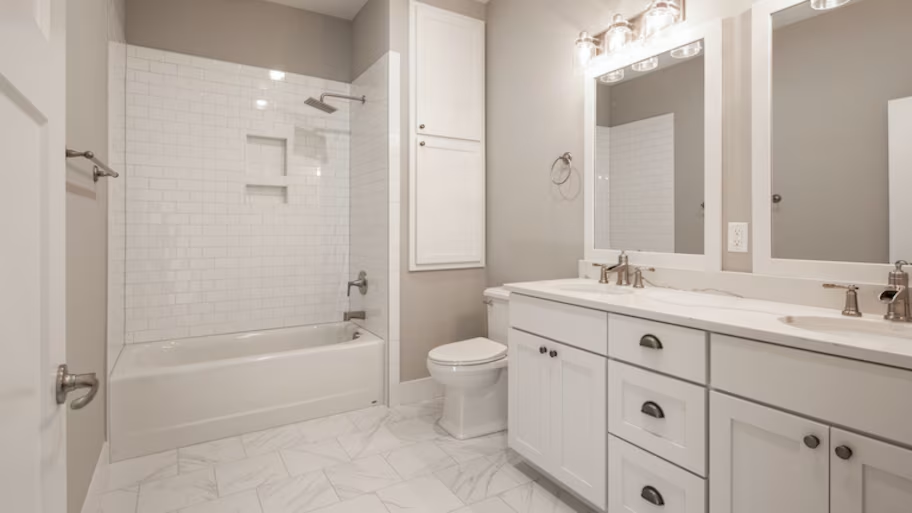
Curious how much a shower remodel costs? From new fixtures to full installations, we have the prices you need to know to establish a shower remodel budget.
Clear up the fog on which is right for you


Steam showers are easier to install than saunas because they can be converted from an existing shower.
Saunas can be installed indoors or outdoors and can be prefabricated or custom-built.
The costs for both are about the same, but the max you’ll pay for a sauna is $10,000 versus a max of $25,000 for a steam shower.
Saunas produce dry heat, which results in less moisture and makes for easier maintenance.
Steam showers need to be regularly descaled and may develop mold without proper ventilation.
If you’ve been to the spa and enjoyed melting your stress away, you may have considered making it a frequent routine at home. So, after some digging, you’ve narrowed your choices to a steam shower and sauna. While both are excellent options, it’s time to weigh the pros and cons of each to help you decide which one is best for you.
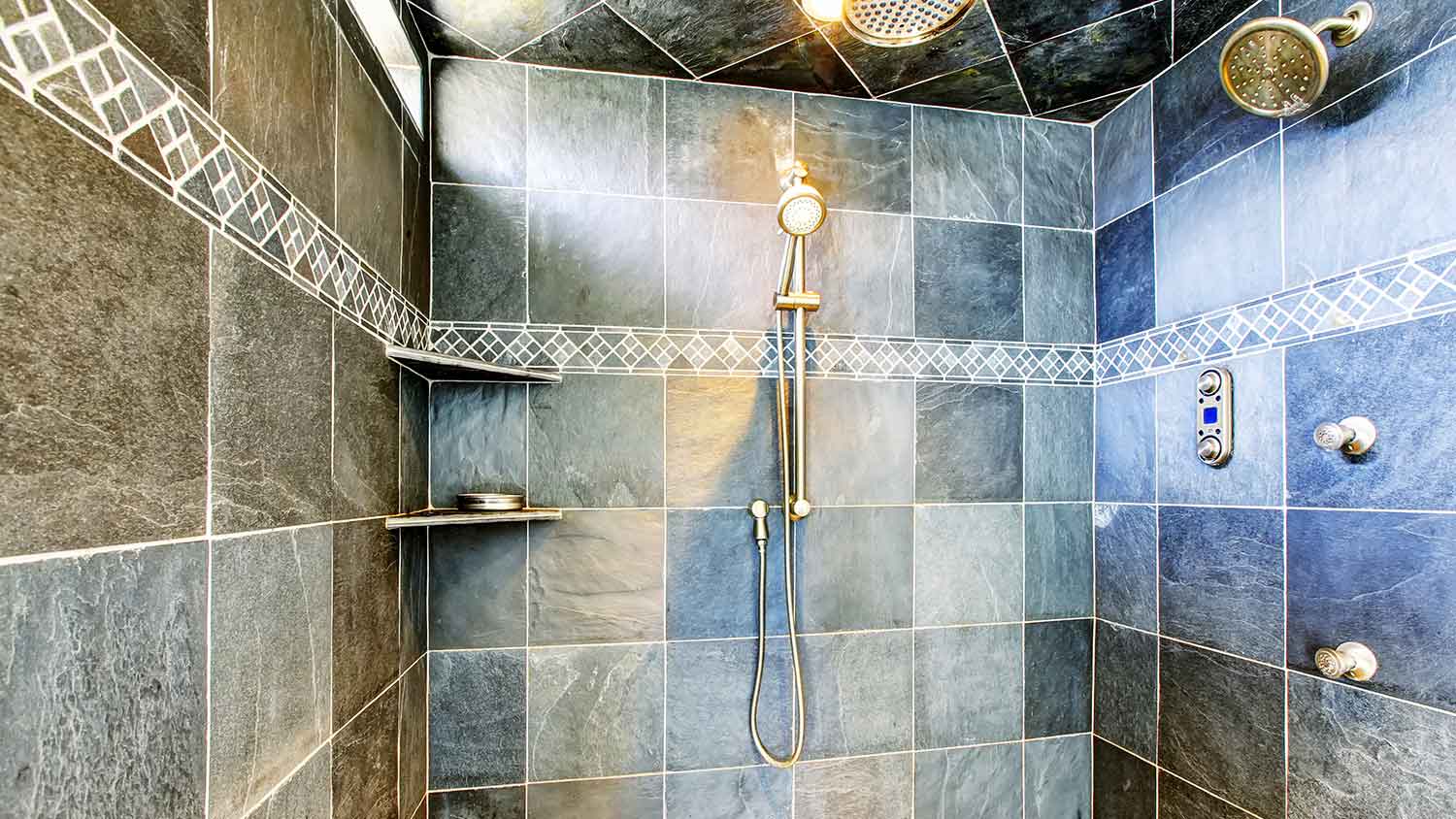
A steam shower is an enclosed stall that creates steam without hot water. It uses a steam generator you can digitally control from your shower and is located in a closet, attic, garage, or crawl space below it. But it’s never installed inside the enclosure. It works by boiling water and channeling water vapor into your showerhead to give you that steamy experience.
A steam shower is an excellent way to create that relaxing, spa-like experience at home. It gives your face a healthy glow by opening and cleaning your pores of dirt, oil, and dead skin cells. And not only is it great at cleansing your skin, but steam showers can also:
Improve your blood circulation: According to a study in the National Library of Medicine database on moist heat, which is what steam showers produce, the steam created from these showers can help dilate or enlarge your blood vessels, increasing your blood circulation.
Help respiratory conditions: Being engulfed in this steamy stall can open up your airways, relieve congestion, and loosen mucus which can help respiratory conditions like bronchitis, based on results from a pilot study by Indian Pediatrics.
Ease muscle pain and stiff joints: Increased blood flow helps to get more blood moving to those sore muscles and loosens your stiff joints, according to the Arthritis Foundation.
Versatile installation: You can install your steam shower wherever you want. If you want to install it in your existing shower space, you can. Or, if you want a more luxurious environment by using a separate, dedicated space for your steam shower, you also have that option.
Uses less water than regular showers: A steam shower uses around 2 gallons of water every 20 minutes to help you relax and unwind. Meanwhile, regular showers use roughly 2 gallons of water per minute. That’s a huge difference, especially if you tend to take shorter showers because of how much water they use.
Fit your home’s aesthetic: Since these showers operate at 100% humidity, they must be built with non-porous materials like glass and tile to prevent the build-up of mold and mildew. Since tile has endless styles and material options, your steamy enclosure can easily fit into your bathroom aesthetic.
While steam showers are noteworthy additions to your home, they have drawbacks. For one, it’s not a budget-friendly option to create a steamy environment for your home, especially if it’s something you only plan on using once a month (or less). Here are a few other considerations:
Poor ventilation can cause mold and mildew issues: You’re creating an environment in your home that operates at max levels of humidity and moisture. And while it can provide loads of health benefits, if it’s not adequately ventilated, it can also lead to costly mold and mildew problems. To help keep your space safe, you’ll need to make sure your stall has sufficient ventilation.
Maintenance: To keep your unit functioning properly, you must descale the generator to prevent mineral deposit buildups and use a homemade vinegar cleaner to help prevent mold and mildew after every use. You’ll also need to check it periodically for leaks.
Might require more space: While having the freedom to install your steam shower wherever you want is a plus, it can also be a downside if you’re limited on space. A steam shower might require more space, depending on your current shower size. The smallest-sized standard shower is 30 inches by 30 inches, while the smallest-sized steam shower is roughly 36 inches by 36 inches. However, how much space it’ll take up in your home depends on how much sitting and standing space you want in your shower. Talk with your pro to discuss installing a steam shower that fits the space in your preferred bathroom. You may need to convert part of a closet or bedroom to get the space you need.
Dehydration: The heat produced from these shower stalls can cause dehydration, so you’ll need to make sure you’re adequately hydrated before stepping inside.
Cost: Installing a steam shower isn’t a wallet-friendly investment, so factor the initial and long-term costs into your decision.
Electricity bill: Steam showers can add $24.50 per month to your electricity bill if you run it for 30 minutes (10 minutes to heat up and 20 minutes of usage) a day at a rate of $0.23 per kilowatt-hour. Of course, that depends on how often you use it, your state’s electricity rate, and how many kilowatts-hour your steam generator needs to run.
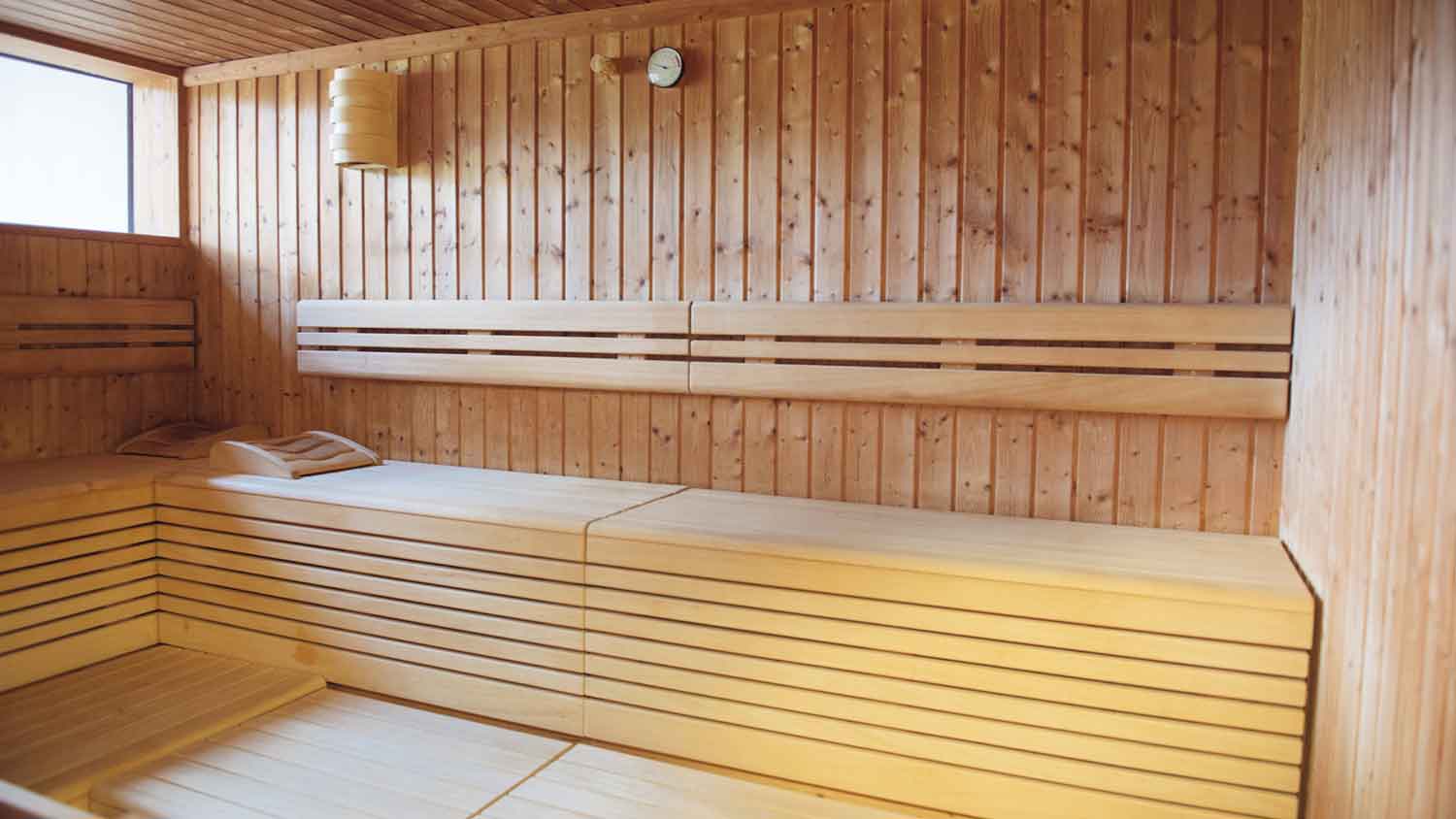
Saunas are traditionally made of wood and use wood-burning, electrical, or gas stoves, or infrared technology to create a dry heat, low humidity environment. The average temperature in a sauna is 160 to 200 degrees F.
Steam saunas date back thousands of years and are a reliable source of relaxation that can help you sleep better and relieve anxiety. Let’s look at a few reasons why homeowners consider this a must-have addition to their homes:
Low moisture: Since saunas create a low-humidity environment, they also have low moisture levels. This is perfect if you want to experience the benefits of heat therapy without your skin feeling too moist.
Privacy: Most saunas are in spas or gyms where you share a space with strangers. But the added privacy of an at-home sauna means you enjoy unwinding without worrying about who just walked through the doors.
Works indoors or outdoors: You can install your sauna indoors or outdoors, depending on your preference and space.
Increased blood flow: While it doesn’t produce high levels of steam, the study also states that it can improve your blood flow.
Saunas can benefit homeowners, but it’s not always sunshine and rainbows. Because they can get so hot, staying in one for longer than 20 minutes is not recommended, or you can risk dehydrating and overheating. When considering a sauna, here are a few additional flaws to keep in mind:
Maintenance: Whether you install your sauna in your home or yard, it’s up to you to make sure that it’s running smoothly. This can include sweeping and vacuuming, cleaning hard water buildup, keeping surfaces dry, and letting air out. And you’ll have to take care of this yourself or hire a pro.
Requires preheating: Your sauna needs to heat up before you get in, which can take 45 minutes on average. This isn’t very convenient if you’re looking for an immediate way to ease the day’s stress away. Plus, the average electricity rate is $0.23 per kilowatt-hour (kWh), and if your unit uses eight kW per hour and you run it for 75 minutes per day (45 minutes to preheat and 30 minutes to use), it can add $70 per month to your electricity bill. Of course, this depends on how many kW your unit uses and how often you plan to use it, but it’s worth noting.
Space: You can’t place a sauna anywhere in your home, and you’ll need a dedicated space. Some homeowners install one in their primary bathrooms, garages, or basements. Depending on where you want it, you might need to rearrange that area. You also might need an outdoor unit if you don’t have the interior space.
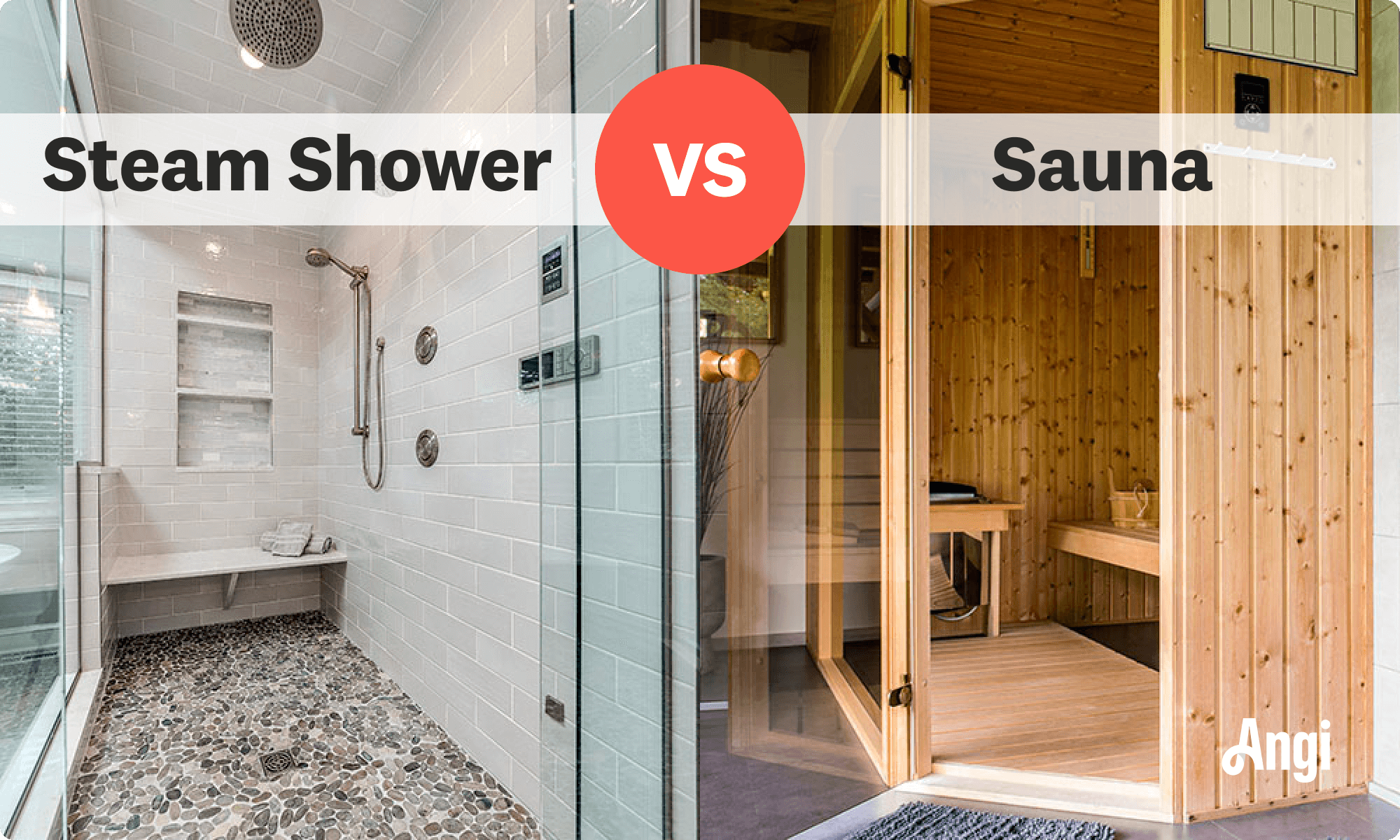
| Steam Shower | Sauna |
|---|---|
| Moist heat | Dry heat |
| Reaches the desired temperature in 15 minutes | Reaches the desired temperature in 45 minutes |
| Can fit into the existing shower space | Requires a dedicated space |
When weighing a steam shower vs. a sauna for your at-home heat therapy, a few factors play a key role in your decision.
For both units, you might need to modify your home’s interior to fit into your space. But steam showers require far less space than a sauna, and you can convert an existing shower into its steamy counterpart. On the other hand, saunas require a dedicated space. Saunas also require electrical, ventilation, and insulation work, while steam showers need plumbing for the steam generator. Both need proper ventilation to prolong your unit’s lifespan and prevent mold and mildew buildup.
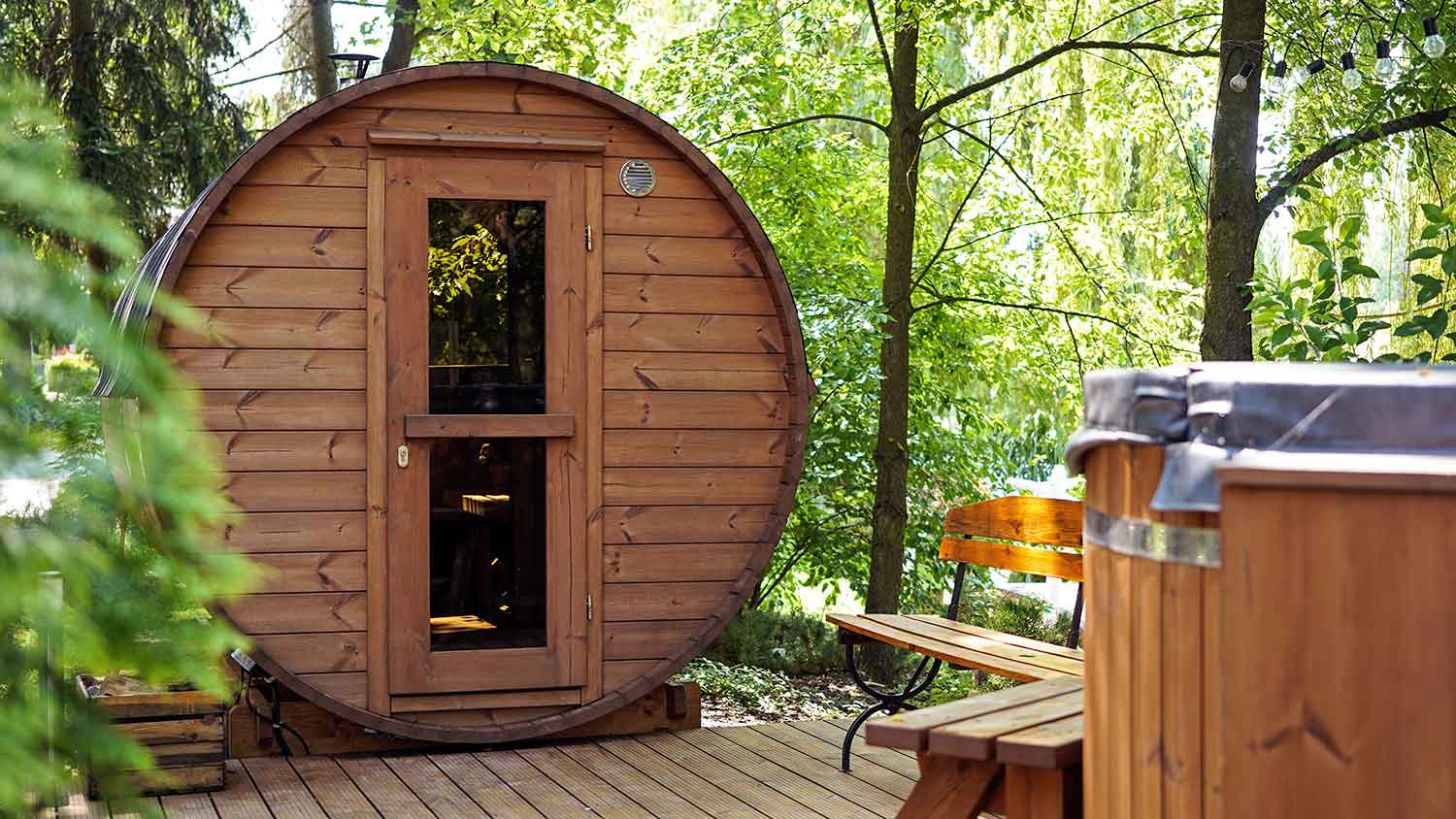
Both steam showers and saunas come in various options to fit your needs. Some popular steam showers are prefab, custom-built, walk-in, and shower tubs. Some sauna options you can choose from are traditional, infrared, outdoor, and hybrid.
Saunas are made from wood, so you’re pretty limited on how they look, though you can customize the type of wood and layout to your preference. Steam showers allow for more design flexibility since it’s built with nonporous materials such as glass and tile, which come in many design options.
While it seems like steam showers and saunas operate the same, they use different types of heat therapy to produce that relaxing environment for you. Steam showers are roughly heated to 100 to 120 degrees with 100% humidity, creating a moist heat environment. Traditional saunas are heated to 160 to 220 degrees with less than 10% humidity, resulting in a dry heat environment. An infrared sauna, which gives the benefits of a traditional sauna without high heat levels, is heated to 140 degrees on average.
Lower temperature levels don’t mean it’s not effective. It’s a method of heating that can still allow you to feel the effects, but each person might experience it differently.
They both offer health benefits, but they’re slightly different. Moist heat, produced by steam showers, penetrates the skin faster than dry heat. This allows you to experience some of its benefits quicker, like improving blood circulation, relieving congestion, helping you relax, and easing muscle pain and stiff joints.
While you can still experience relieved muscle pain and loosen joints within saunas, the results aren’t as extensive. However, that doesn’t mean that steam showers are the best solution for everyone. Humidity can worsen arthritis symptoms, while dry heat saunas can help ease them.
Also worth mentioning, both saunas and steam showers might not be the best option for you if you have low blood pressure, coronary artery disease, and a history of a stroke, according to Edward-Elmhurst HEALTH. You’ll need to consult your doctor to ensure these units are safe to use.
Talk to your doctor if you’re unsure what treatment option is best for you.
Both steam showers and saunas are an investment. On average, steam showers cost $2,800 to $7,100, potentially going up to $25,000 depending on your add-ons and if it’s custom-built. Opt for the best nonporous tile that fits your budget or a smaller model to save money on this install.
Saunas cost $2,500 to $7,000 to install on average, but costs go as high as $10,000. Your actual cost depends on the type of sauna you want, if it’s an indoor or outdoor unit, the wood used, the design, and if it’s prefab or custom-built. You can save money when purchasing a sauna by getting a one-person-sized sauna.
Contact a shower installer near you for personalized assistance and recommendations for your new steam shower or sauna project.
The answer comes down to your needs in the battle of a sauna vs. a steam room. While both options are a great way to enjoy a relaxing spa-like experience at home, they offer slightly different benefits. If you’re limited on space, converting your regular shower into a steam shower might be worth considering. Or, if you prefer dry heat and its benefits, a sauna might be the way to go. Consult a pro and your doctor about what option might be right for you.
From average costs to expert advice, get all the answers you need to get your job done.

Curious how much a shower remodel costs? From new fixtures to full installations, we have the prices you need to know to establish a shower remodel budget.

The cost to add a bedroom and bathroom can pay off with an increase in your home’s value and more space for you and your family. Costs vary by project scope.

An updated bathtub can give a bathroom a whole new look. Find out how much it costs to replace a bathtub, including prices by type and labor costs.

DIY sink installation is a doozy but do-able for those with experience. Use this guide to learn how to install a bathroom sink in a few steps.

An updated bathtub can give a bathroom a whole new look. Find out how much it costs to replace a bathtub in Denver, CO, including prices by type and labor costs.

An updated bathtub can give a bathroom a whole new look. Find out how much it costs to replace a bathtub in Kansas City, MO, including prices by type and labor costs.